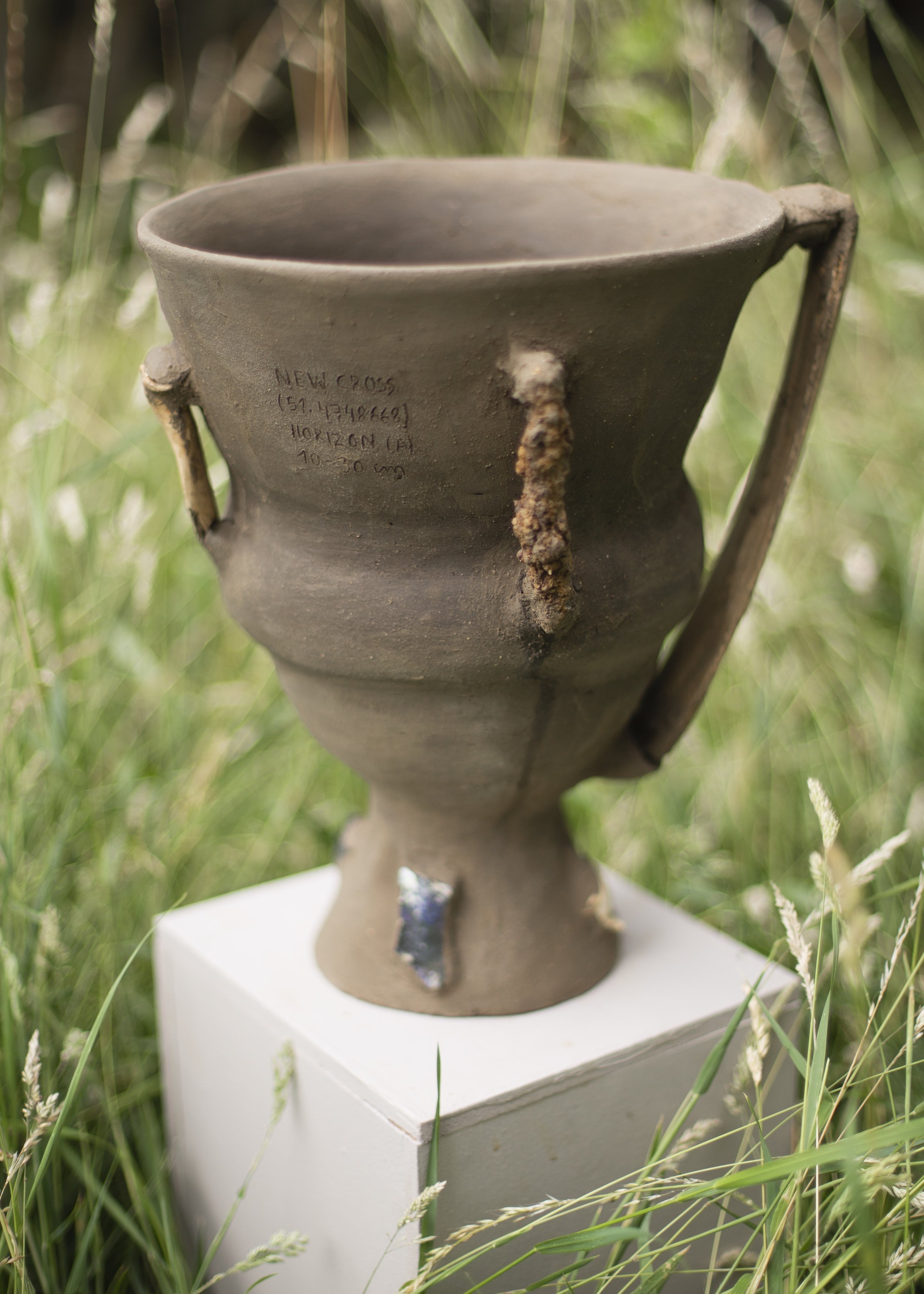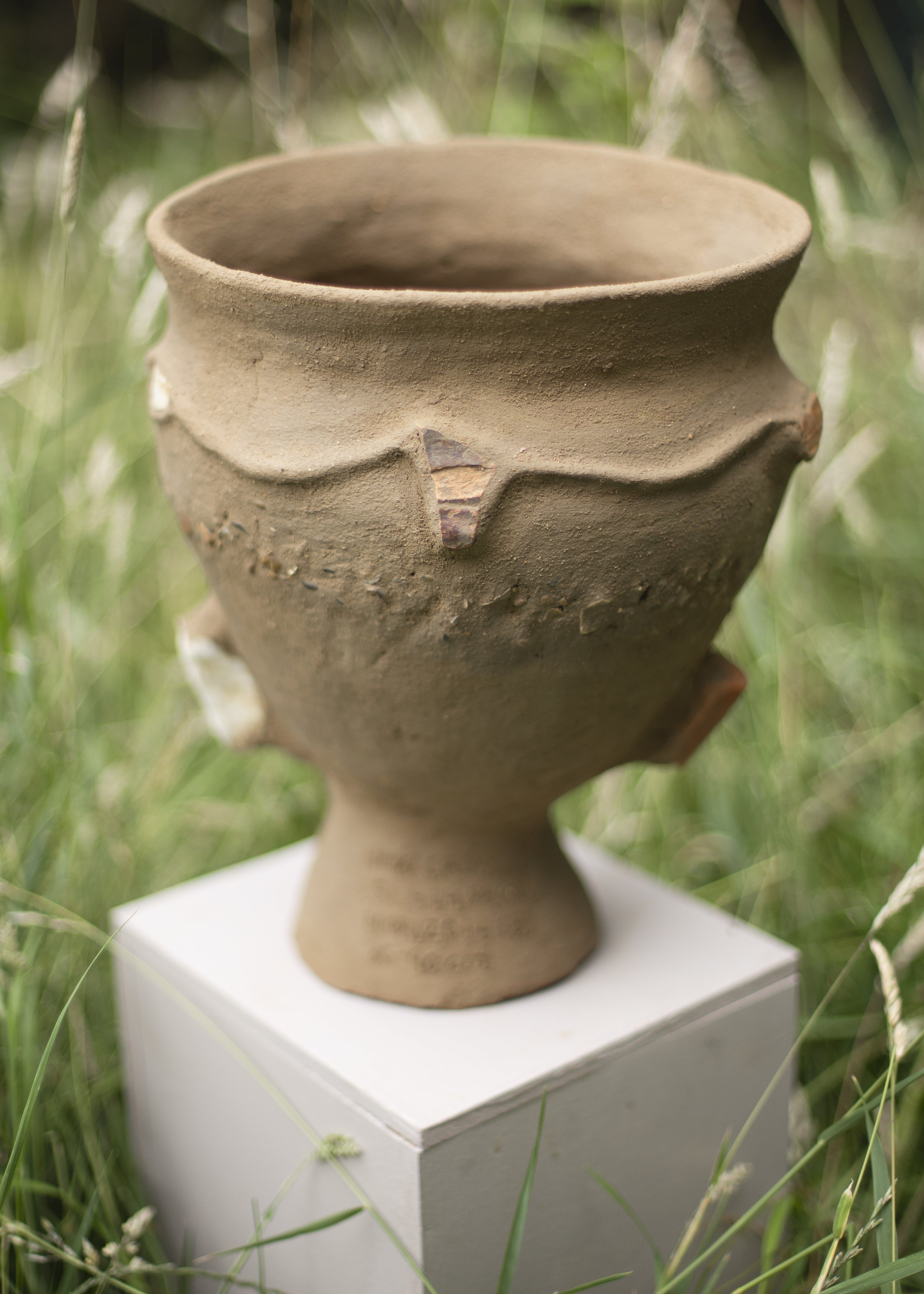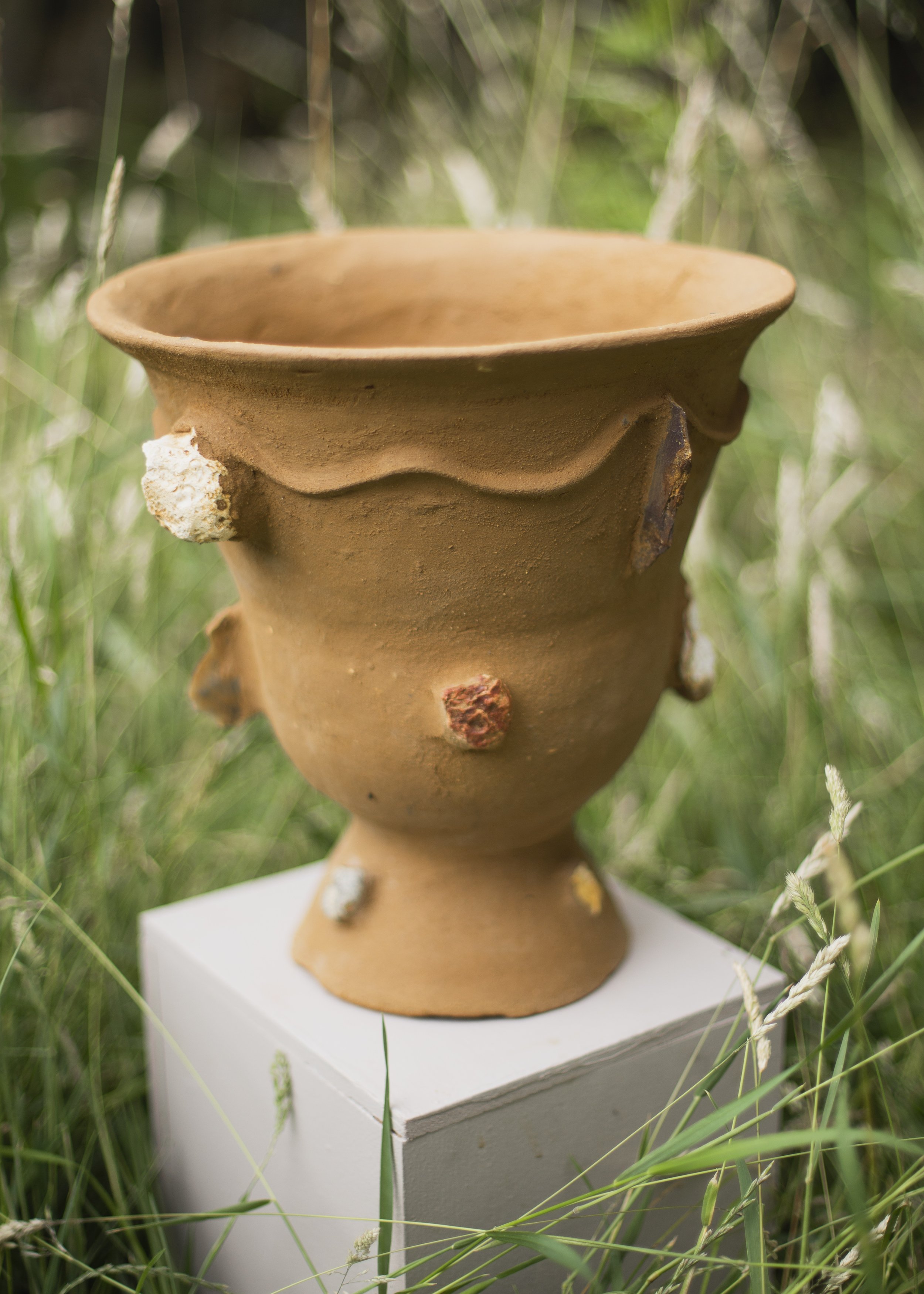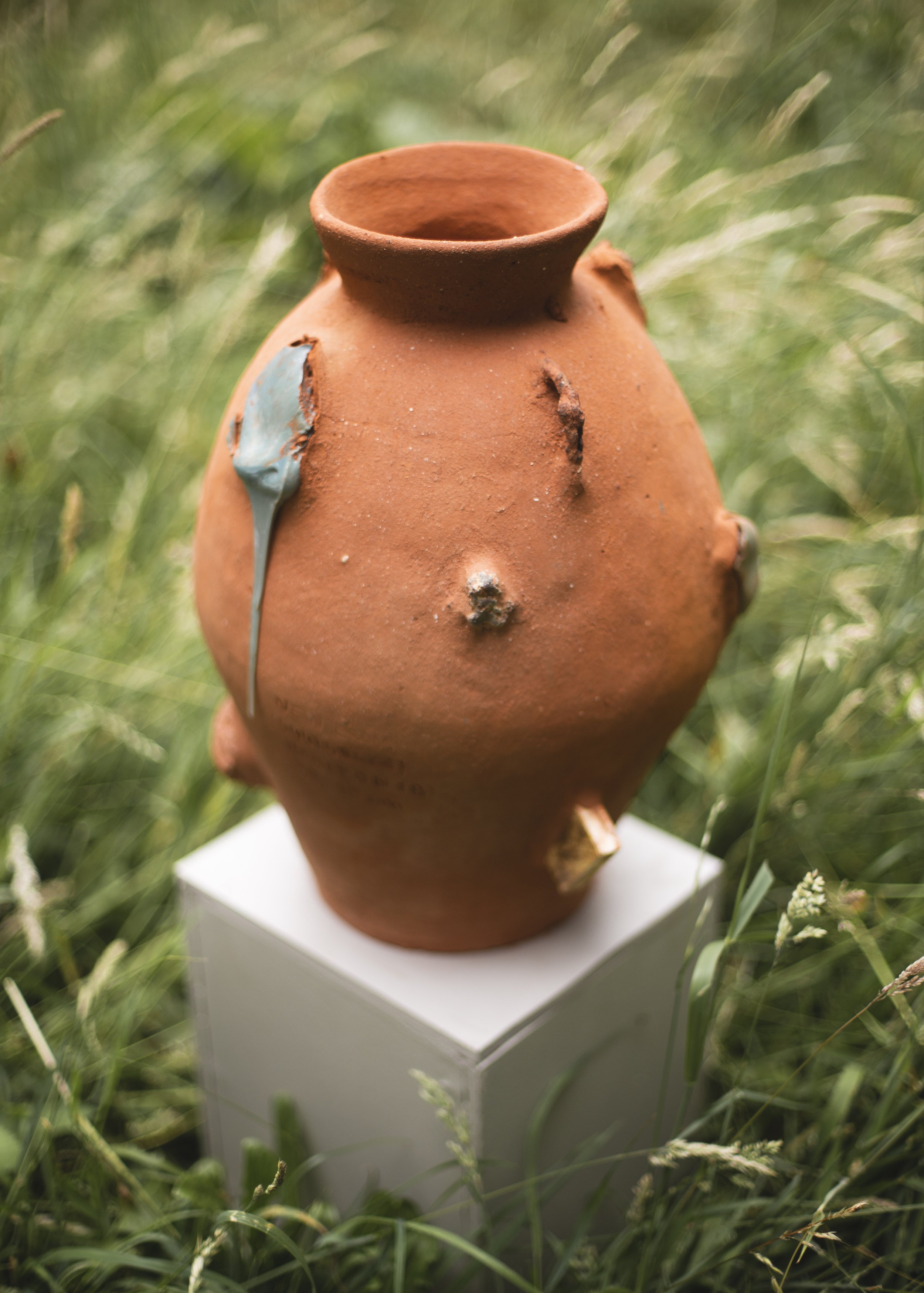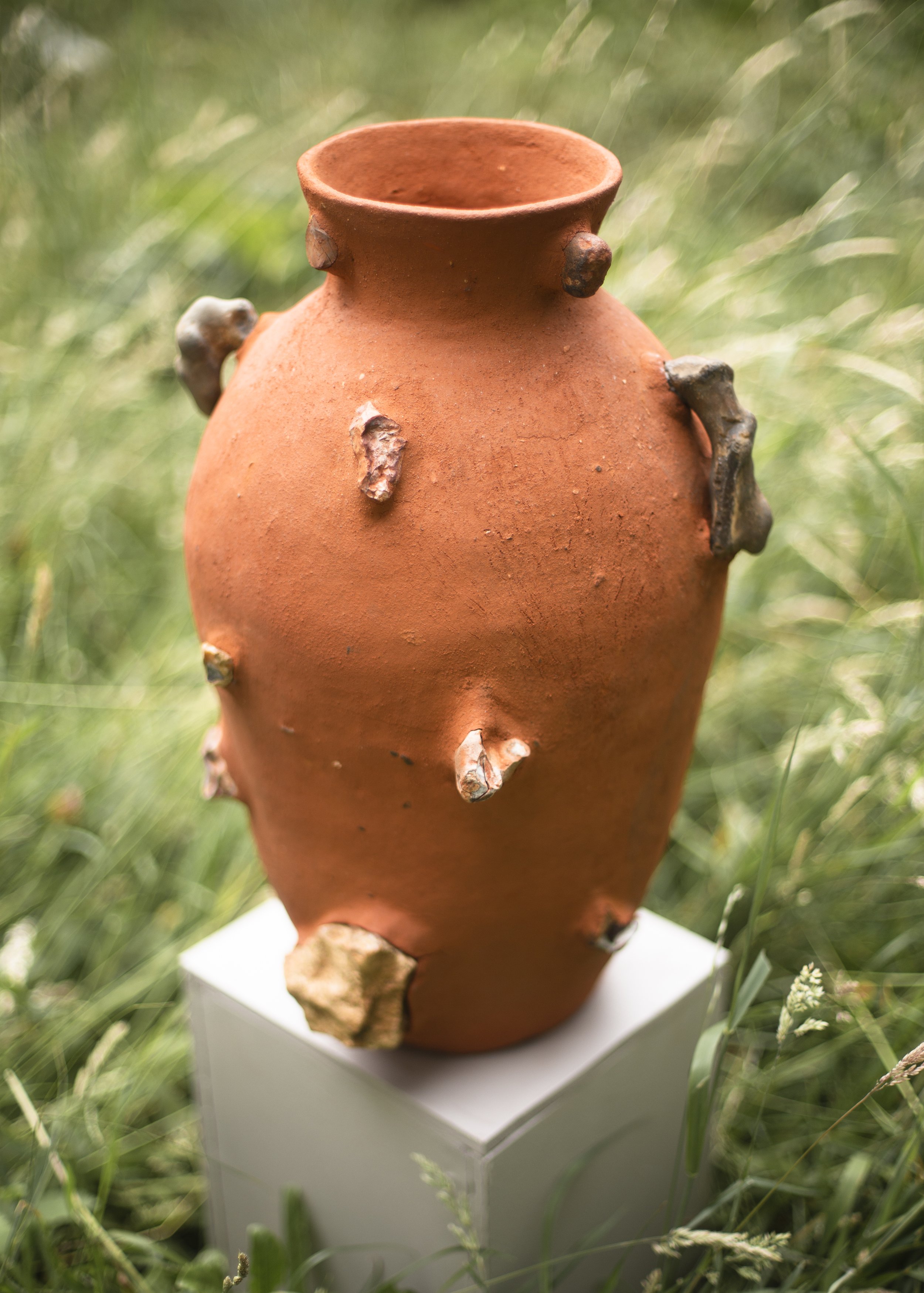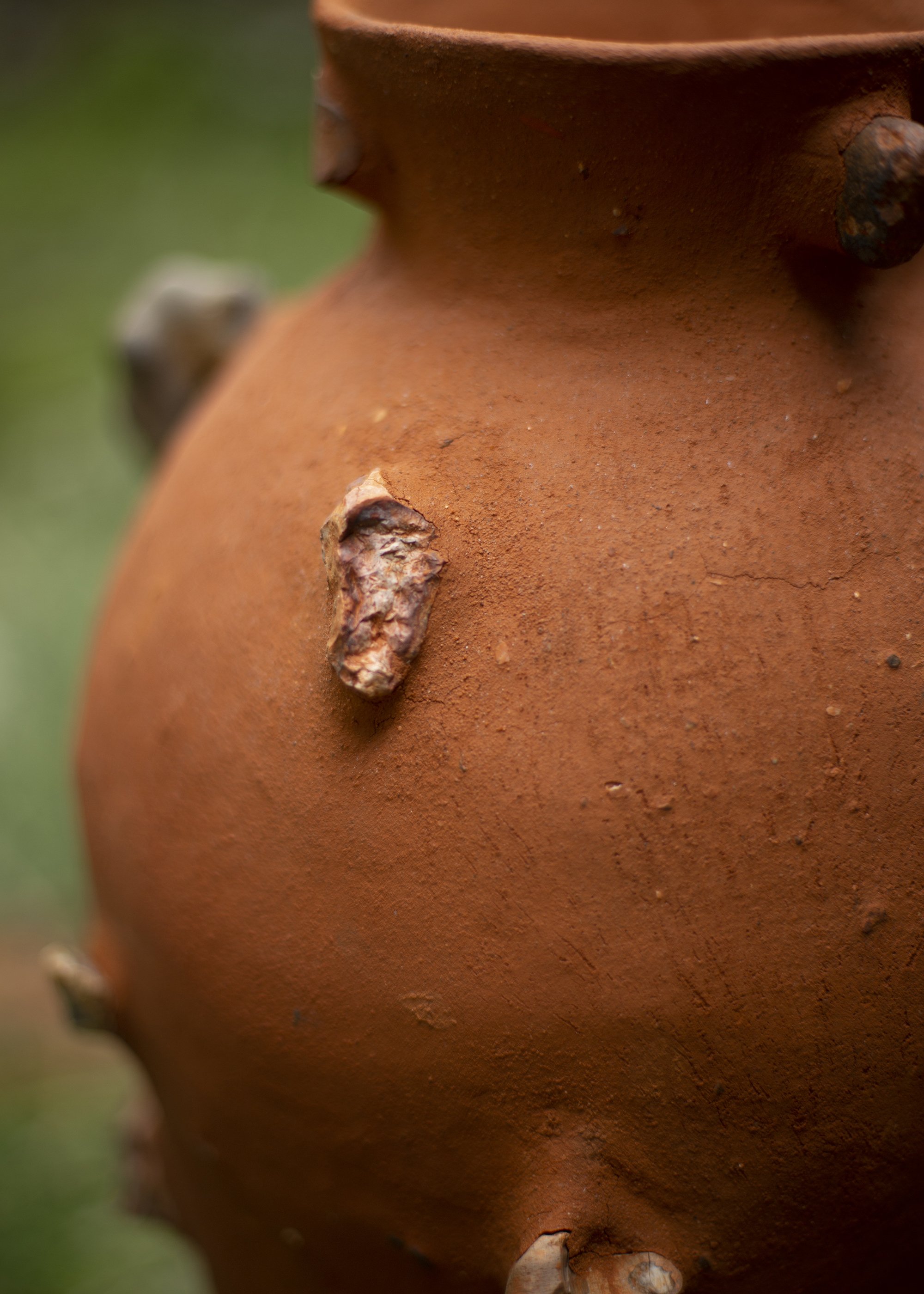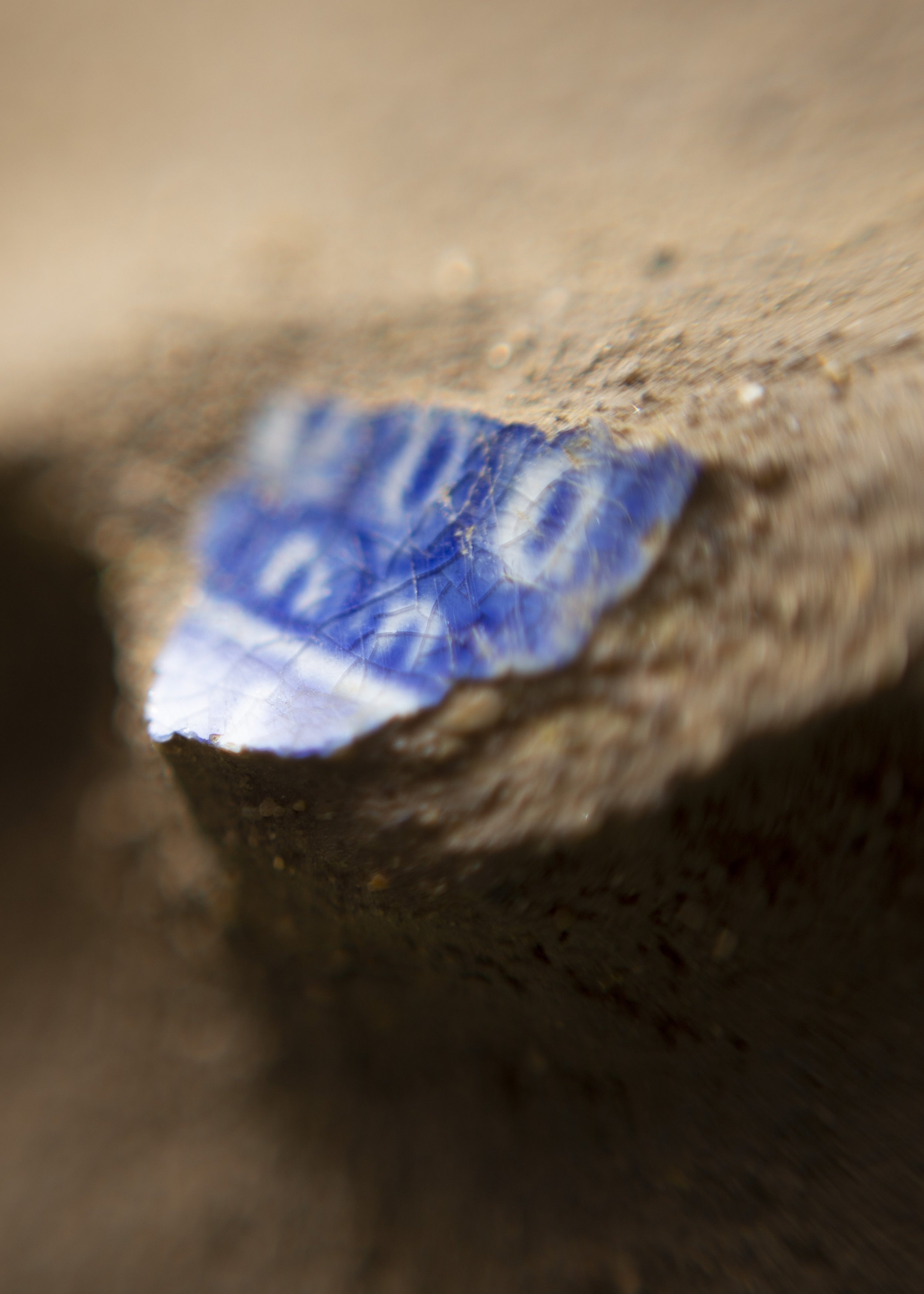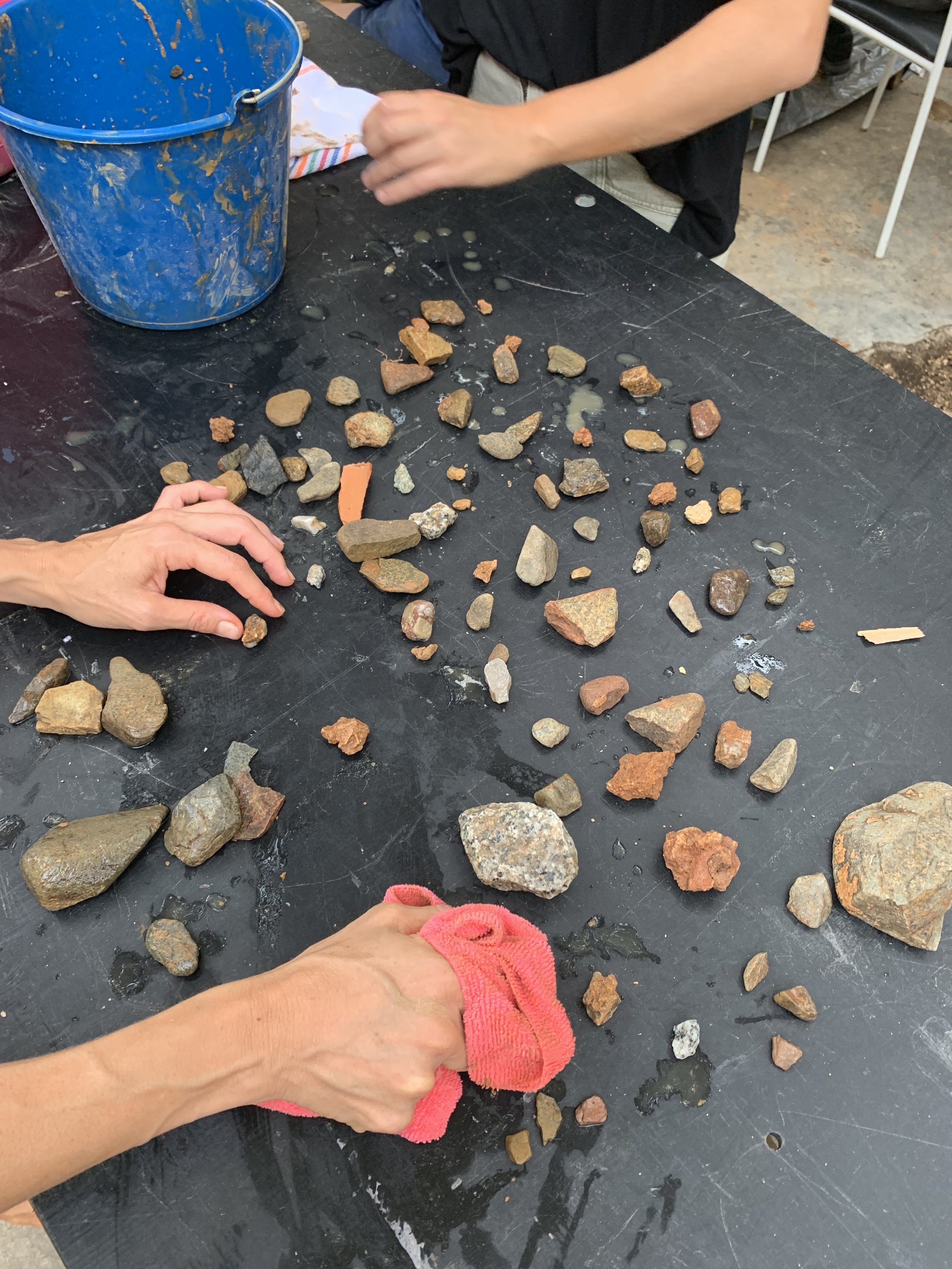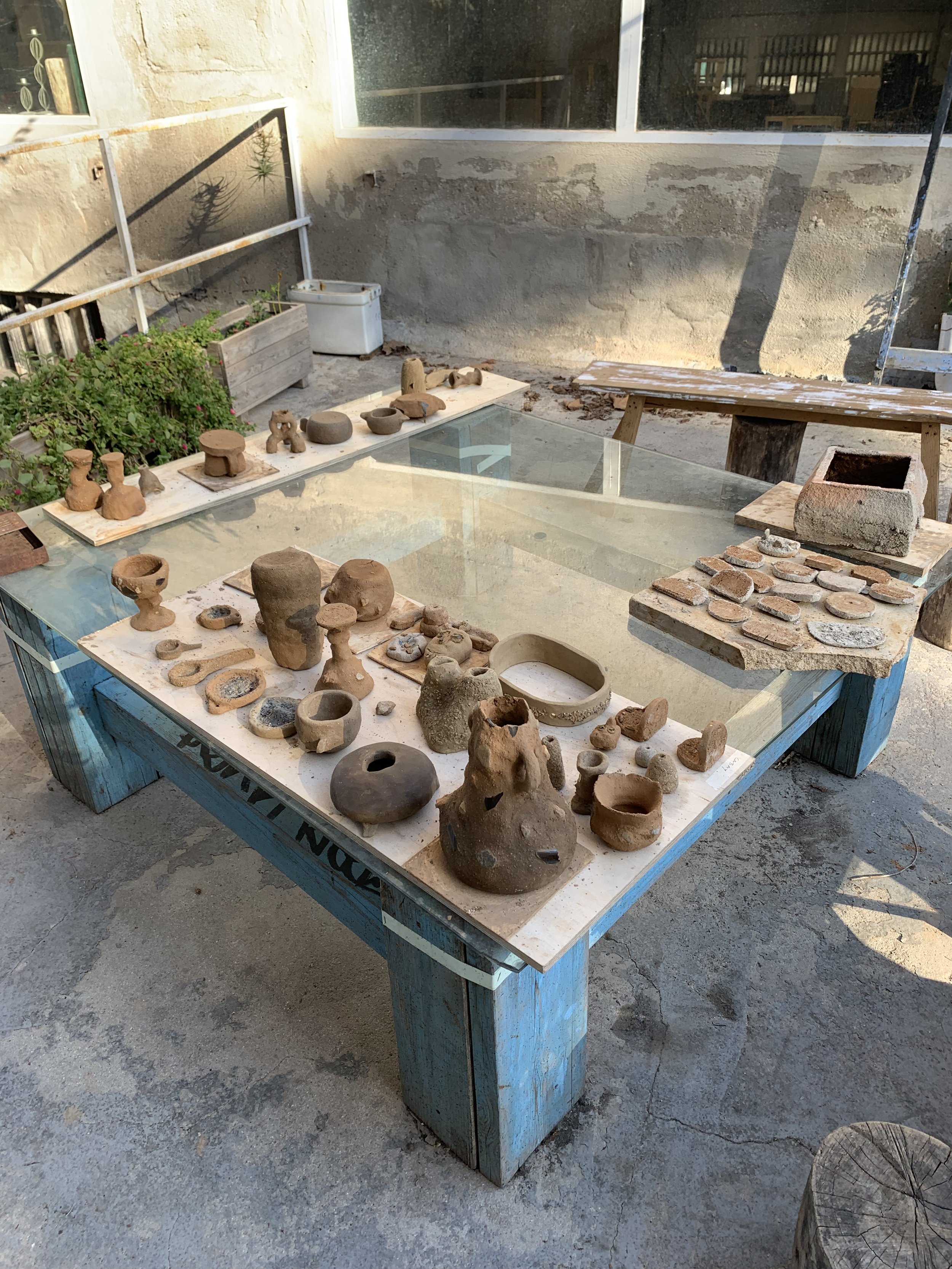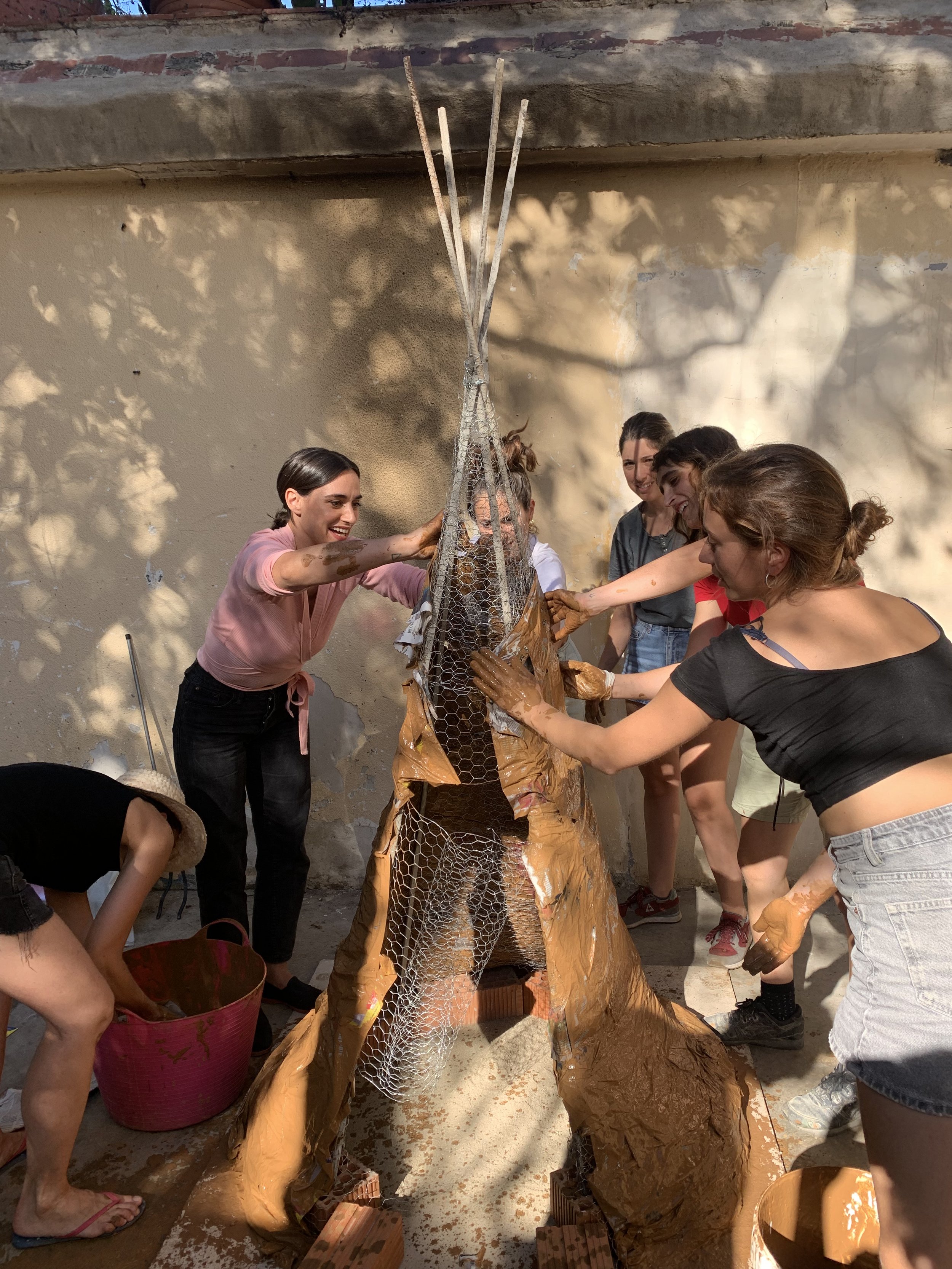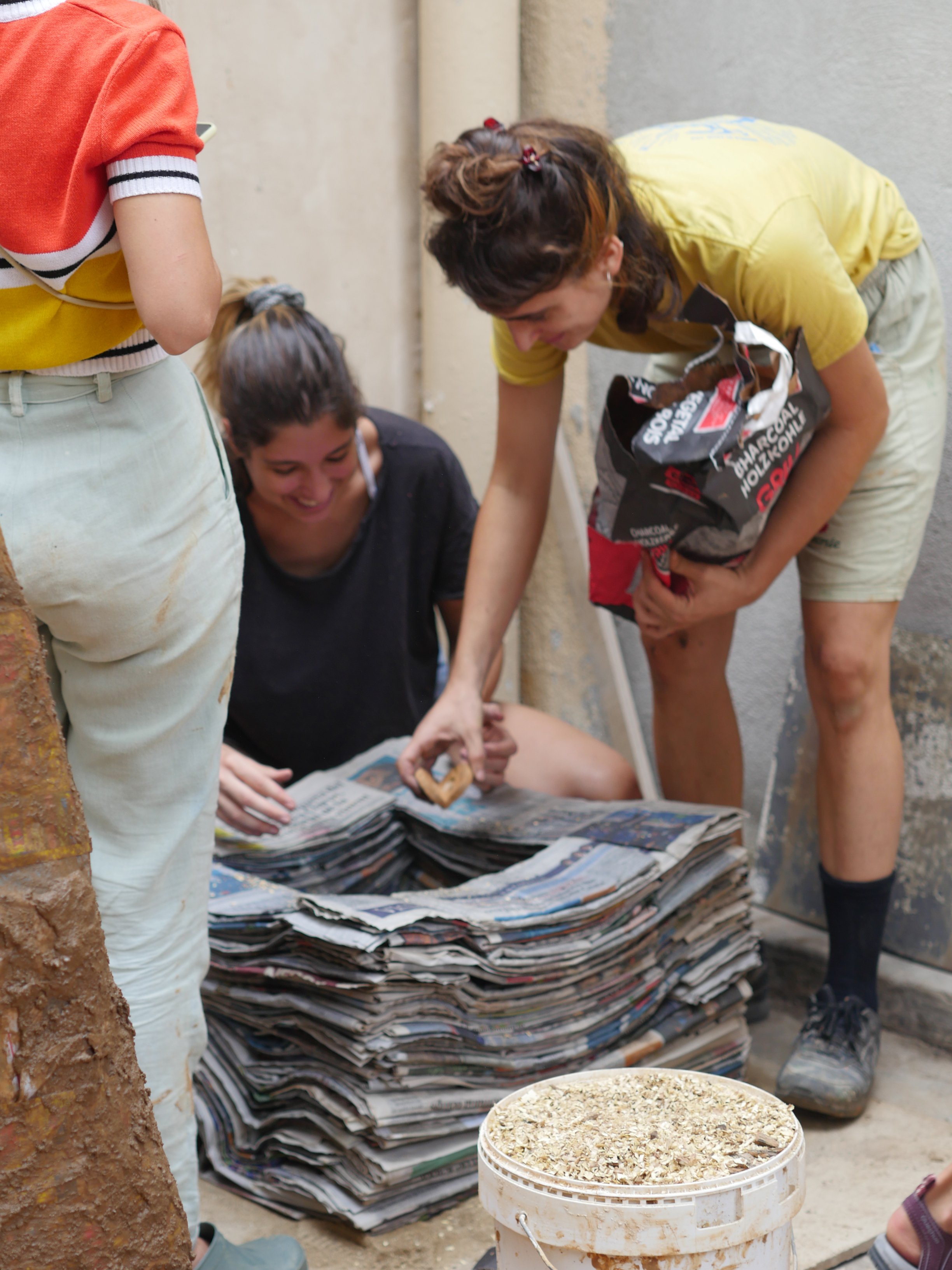Matters of Soil

Creating narratives around the perception, use and ecology of soil
Maria Roy Deulofeu is a London-based designer, researcher and maker exploring craft that encourages more sustainable practices. She uses critical design, combining traditional and experimental modes of production to explore new narratives that evolve from an anthropocentric and extractive culture towards one that seeks to immerse species and the environment.
Her interdisciplinary approach allows her to work collectively within a range of disciplines such as ceramics, archaeology and biology, researching solutions – proposing alternative scenarios – for our current ecological, political and social crises.
During lockdown she turned her London garden into the site, study and subject of a fascinating cyclical project, proving that we makers have all we need, quite literally, at our fingertips. We hear more from the artist below.
My fascination with soil comes from my own history of working with ceramics. However, it is only recently, in the backyard of my garden, that my personal journey with soil took a reflective turn. That is, I decided to develop my own methodology through an archaeological mission, attempting to foster my relationship with soil and with my immediate environment. By slowly uncovering its layers, I aimed to learn from it, grasp how it is affected by the system of natural processes, and of course by the traces we, as a human society, have left. Ultimately, I sought to bring attention to the value of soil. How can something so primal be so widely ignored?
I wonder, can this direct interaction and involvement with soil, through the process of digging and gathering artefacts and soil, guide me towards a more sustainable way of crafting? In what ways can I narrate how soil has been seen as a commodity and source of profit for our societies? Could this project contribute to questioning the paradigm of soil in capitalist western societies? Is there an opportunity for a more equal and less exploitative interaction with the environment, away from soil’s value as a commodity?
This project, I believe, becomes significant through both its methodology, which guides me towards a process of learning through doing, and also through the craft which itself portrays the process.
My aim is to support a perception of soil which does not understand it in binary opposition to humans, but rather integrates a relation of co-dependency between the human and soil, bringing attention to the negative impact of human activities on the latter. Soil, I argue, should not be perceived as a mere commodity – it is part of us, part of why we exist, and so it is something to be respected and cared for. At the same time soil has been, from the beginning of our societies, part of a technology that gave not only food and energy but also tools, shelter and culture. This is an opportunity for designers to get close to soil in order to create and live in systems that, like soil, are loops or circular systems.
During this project, I have not bought materials from a multinational which extracts resources, possibly polluting the environment and/or exploiting communities in the process. Instead I decided to look at the soil in my garden and borrow the materials from it. By doing so I attempted to look at my immediate surroundings and sought to learn from them and respect them. In other words, I was examining the perception of soil as the ‘other’. But of course soil should not be considered as an ‘other’ since in reality it enables both our existence and subsistence, and its healthiness is our healthiness. Soil is the material that allows my body to live.
When I dug, I arranged the artefacts and ecofacts according to their material typology and the level at which they were found, as the typology was changing. Each typology represents a soil horizon. In the case of my garden, the first horizon (A) is the topsoil, which mainly contains organic matter and is where I found the largest quantity and variety of artefacts like metals, ceramics and plastics (and also bones). The second horizon (B) is the subsoil, which has a mix of mineral and organic matter and a lot of sediments from building debris, and this is where I found artefacts similar to those in horizon A. The third horizon (C) is the parent material, composed of so-called “London clay”, which is part of the “London Basin”, formed during the Paleogene period which began 66 million years ago. This sedimentary basin covers the whole city of London. In this parent material, I rarely uncovered artefacts, only ecofacts such as flintstones and limestones. Subsequently I processed each of these typologies of soil into clay which I then shaped to create a collection of decorative vases. The soil itself was used to create the shape of these vases and the artefacts and ecofacts were used for ornamentation.
I chose an ornamental shape because I’m interested in how ceramics through history has commemorated and visualised the aesthetics and interests of society. These collections become souvenirs of the site and together with the materials, represent my experience with this place.
With these vases, I aim to showcase the vibrant materiality of soil. By representing what has been found in each soil horizon, I aim to be witness to the impact and the remnants of human activities through history, and use the vases as a medium to discuss how soil has been neglected over time.
During this journey into the soil, I came to the conclusion that the interpretations of the materials I found in the hole are subjective. Although I have been supported with some comments from archaeologist and geologists, I’m interested in leaving the interpretation of the vases open, because I don’t believe that the materiality speaks for itself; it is important to create possible fictions regarding what this sediment represents and means.
At the same time, looking at the narrative of soil, asking what is natural, what is artificial, what is authentic or not, I realised that these concepts evolve. The matter transforms and ends in geology: the waste becomes something quite valuable that explains the past, other living species die and become fossils. When this happens the boundaries between the concepts dissolve. I believe this is a lesson that has helped me in my relationship with the environment, by seeing how everything and all of us are part of nature, evolving and transforming together. It is, therefore, crucial for us to find sustainable ways of producing and living that can let us coexist with other species, allowing them to continue to be part of us and allowing us to be consciously part of them.
The confinement in my house during COVID-19 meant that this situation became central to the project since I had to engage in a hyper-localised production from collecting the materials, to processing them into crafts and building a kiln next to the cavity in order to fire the ceramic pieces. When I finish, all of the soil extracted will be returned to the hole, the kiln will be dismantled and just some remains will be left. Perhaps someone in the future will uncover it again, hopefully not to rebuild, but maybe to help the soil and its living species live, expand and regenerate.
Project Synopsis
Soil is where most things come from and where most things return. It is also a material that reveals the history of our planet. Humans have created an exploitative relationship with soil as we often work against it, rather than with it. We undervalue the importance of soil in providing the optimal conditions for our survival.
As an attempt to foster my relationship with soil and my immediate environment, I decided to embark on an archaeological mission in my garden. Through excavation, I identified and collected different types of soils, artefacts and eco facts that I categorised based on the geological strata at which they were found. With the excavated material I have created a collection of decorative vases and used the found artefacts to ornament the surfaces.
These pieces are a material representation of my archaeological journey and souvenirs of the site. The aim is to communicate how human activities impact the soil throughout history and subsequently discuss how the importance of soil has been neglected over time.
Due to Covid-19, my project became hyper-localised. Everything has taken place in the confinement of my London flat: collecting the materials during my excavation, processing them into the vases, even building a Neolithic kiln to fire the pieces. All the soil I extracted will return to the site it was sourced from and the kiln will be disassembled. Only a few remains will be left until perhaps someone from the future will uncover them again. I hope this project will help the soil and its species live, expand and regenerate.
Project Collaborators
Núria Morera, PhD Candidate, Prehistory Department, Autonomous University of Barcelona
Tatiana Muñoz Melo, Ceramicist & Kiln Designer / Builder
Photography
Giulia Zelig
Project Update
Post Lockdown
During this last year after graduation, I had the opportunity to give two workshops with students. One was in a space called TMDC in Barcelona, where we worked with the earth from a building site nearby and processed it into ceramic pieces. I concluded the workshop with Tatiana M Melo, a ceramic kiln expert, to build with the students, two ephemeral ceramic kilns using only recycled materials found around us. The other one was in the See Lab, an artist-run cultural incubator in The Hague. There, I worked with the artist in residence to also make ceramics and build a kiln with marine clay extracted from a nearby area. I realised that through these workshops, the participants not only enjoyed greatly but also felt stimulated and connected with the practices of processing earth, making ceramics, a kiln and making fire.
I strongly believe that sharing my practice with people and developing it in new locations can become an active agent of combating the ecological crisis because there are infinitely interesting results and opportunities when you work close to the earth.
All material © Maria Roy Deulofeu 2021

